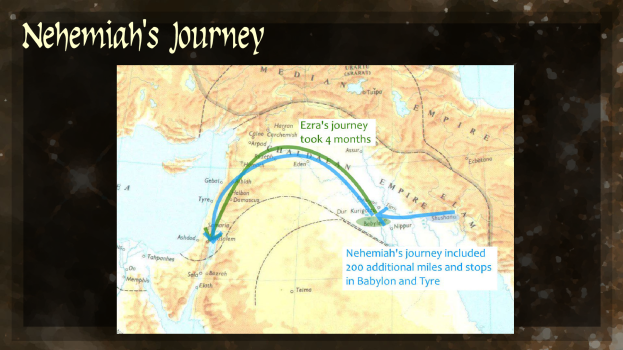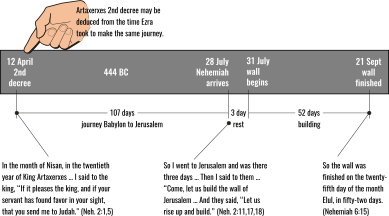Admittedly, the twentieth-year start point for Daniel’s 70 weeks has had its supporters. Their problem though, is that a count of 483 years (69 x 7) from 444 BC comes to AD 40, a date which arrives well after Jesus died. So, proponents of the 444 BC terminus a quo resort to various 'short-year' theories to make the prophecy fit.
The best-known theory is the 360-day 'prophetic year' put forward by Sir Robert Anderson in AD 1895 to bolster the then emerging ‘dispensational’ system of prophecy. He multiplied 483 years by 360 (instead of 365¼), then added it to 445 BC, and arrived at the time (he said) of Jesus’ triumphal entry into Jerusalem in AD 32.
Anderson’s dates had to be adjusted by Dr. Harold Hoehner of Dallas Theological Seminary to 444 BC and AD 33 where they remain the basic foundational dates for the doctrine of a future 'seventieth week' held by many prophetic teachers to this day.
This is where the Dispensational ‘count and date’ system comes from – man made doctrine for sure! However, Anderson and Hoehner’s theory is seriously flawed.
To be continued …
The best-known theory is the 360-day 'prophetic year' put forward by Sir Robert Anderson in AD 1895 to bolster the then emerging ‘dispensational’ system of prophecy. He multiplied 483 years by 360 (instead of 365¼), then added it to 445 BC, and arrived at the time (he said) of Jesus’ triumphal entry into Jerusalem in AD 32.
Anderson’s dates had to be adjusted by Dr. Harold Hoehner of Dallas Theological Seminary to 444 BC and AD 33 where they remain the basic foundational dates for the doctrine of a future 'seventieth week' held by many prophetic teachers to this day.
This is where the Dispensational ‘count and date’ system comes from – man made doctrine for sure! However, Anderson and Hoehner’s theory is seriously flawed.
To be continued …



